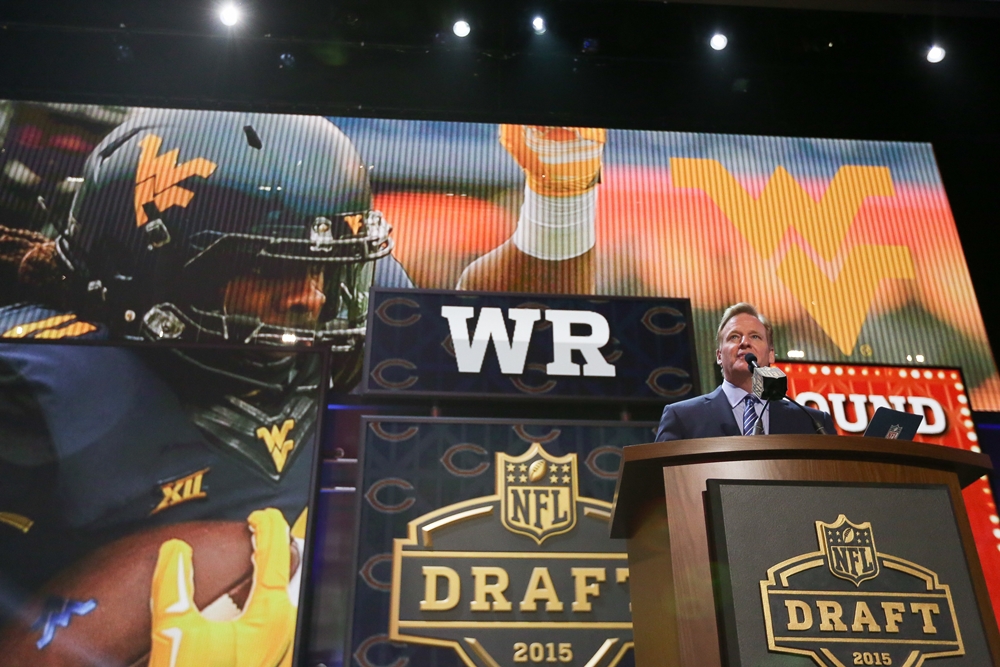 Let me be your voice of reason. You’re going to read and hear a lot of different theories, some of which will be defended as the only way to win your league. But the truth is there’s no one-size-fits-all drafting strategy. Different leagues have different rules which lend themselves to different plans. If everyone in your league is deploying the same strategy, it behooves you to do something different. We all have assorted strengths and weaknesses when it comes to player evaluation. What works for you in your specific situation may not work so well for someone else.
Let me be your voice of reason. You’re going to read and hear a lot of different theories, some of which will be defended as the only way to win your league. But the truth is there’s no one-size-fits-all drafting strategy. Different leagues have different rules which lend themselves to different plans. If everyone in your league is deploying the same strategy, it behooves you to do something different. We all have assorted strengths and weaknesses when it comes to player evaluation. What works for you in your specific situation may not work so well for someone else.
What follows is a generic roadmap that transcends all drafting philosophies. Are you a zero-RB proponent? Come on down. Do you like to draft your quarterback early? Late? It doesn’t matter; this process goes both ways. Do you take your kicker in the first round? Sorry, there are limits.
The procedure borrows the principles of value-based drafting (VBD) but leaves the math out. VBD adjusts the projected points to only count the points over that of a baseline player, usually defined as the worst player at each position on an active roster after the draft. The idea is you don’t care about points that everyone has. All that matters is the useful points, those that others do not have.
You don’t need to do the math. Player projections aren’t that accurate. Too much happens during the season which likely changes the replacement baseline for each position. Then factor in flex spots and playing favorable match-ups and the preciseness of the calculation is lost. The elegance of this system is after you make the adjustment at each position, the top quarterbacks, running backs, wide receivers and tight ends all are in the same range with respect to useful points.
The other tenet of this process is to not pigeon-hole yourself into the conventional QB1, RB1, RB2, WR1, WR2 etc. mentality. Instead, think of it as players filling roster spots, with the greatest expectation for the top spot then a lowered expectation for each successive spot. It doesn’t matter if you put a quarterback, running back, wide receiver or tight end in your top spot; they all contribute equally useful points to your team. The same then holds true for each round.
With that as a backdrop, here’s the step-wise roadmap you can employ regardless of your master plan.
1. Set up exactly enough tiers to account for all non-kicker and non-D/ST spots on your active roster.
2. The number of players assigned to each tier is exactly equal to the number of teams in your league.
3. Go through each skill position (QB, RB, WR and TE) and identify enough at each position to legally fill everyone’s active roster, accounting for the flex spots. Break each position into groups of like expectation.
4. Count up the number of top-tier players you have across each position and tweak your rankings until the number matches the number of teams in the league and label that group Tier 1.
5. Continue this process until you have the required number of players in each tier.
6. As you navigate through the draft, in each round always draft a player corresponding to that tier or one better. For example, your third round pick should come from tiers one through three.
7. Once you’ve completed filling your active roster spots, the tiers are secondary to finding reserves with upside, bye weeks different than your starters, handcuffs, etc.
8. Do not draft a kicker or D/ST until you absolutely have to or there are no viable skill positions left in the draft.
9. If you’re tempted to take a kicker or D/ST earlier, see number 8.
10. Have fun!
Obviously, the big-picture objective is to select as many players as possible in a tier earlier than their corresponding round. This is where you need to eschew the typical QB1, RB1, WR1 conformation and put the maximum talent on your roster. You don’t care about the positions; you care about the expected points. Plan your strategy to extract as many useful points out of each tier as possible.
Another benefit of using this tiered process is if you do your homework, you’re prepared for any scenario you may encounter during the course of your draft. Spend some time before the draft and map out every possibility. What’s the optimal order of picks if you take a quarterback first? What’s the best pathway if you start with three RBs? How do you maximize points if you start WR-WR?
Go into each with an open mind. You likely have a plan you feel is best, but sometimes your leaguemates don’t cooperate and take players that render your strategy very difficult and risky to execute, especially if you’re picking towards or at the end of the first round. The point is, if you’re forced to change your course, you’ve already thought it through and have the confidence to execute it.
And every once in a while see number 10.

